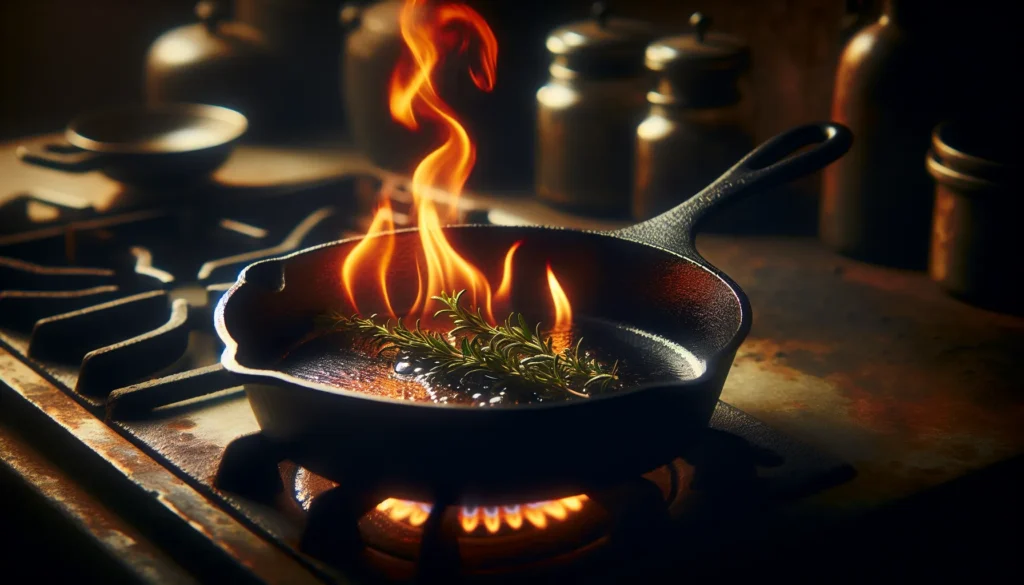What Cooking Techniques Changes a Dish’s Flavor?
Culinary experts and food aficionados alike are always seeking ways to elevate their dishes with innovative techniques. From the precise control of sous-vide to the delicate infusion of the en papillote method, we’ve gathered four unique cooking strategies from a Head Chef and a CEO that promise to transform your next meal’s flavor profile.
- Sous-Vide and Fermentation Transform Flavors
- Cast-Iron Skillet Enhances Dish Intensity
- Smoking Spices Elevates Aromatic Complexity
- En Papillote Technique Infuses Subtle Flavors
Sous-Vide and Fermentation Transform Flavors
Here are two:
Sous-vide cooking, a method that involves vacuum-sealing food in a bag and cooking it to a precise temperature in a water bath, dramatically changes the flavor and texture of ingredients by ensuring they are cooked evenly and retain their moisture. This technique is particularly transformative for proteins, such as steak or chicken, which emerge exceptionally tender and infused with the flavors of any marinades or seasonings added to the bag. The gentle cooking process also allows for the extraction of flavors in a more controlled and thorough manner, resulting in dishes that are consistently flavorful and perfectly cooked every time.
Fermentation, an ancient technique that leverages the natural process of lacto-fermentation, introduces a unique tangy flavor to foods while also enhancing their nutritional value. Through fermentation, natural bacteria feed on the sugar and starch in the food, creating lactic acid. This not only preserves the ingredients but also develops complex, rich flavors that can add a punch of intensity to dishes. Ingredients such as cabbage transformed into sauerkraut or milk into yogurt exemplify how fermentation can turn simple foods into something entirely new and exciting, with flavors that are deeply layered and resonant.
 Jessica Randhawa
Jessica Randhawa
Head Chef and Owner, The Forked Spoon
Cast-Iron Skillet Enhances Dish Intensity
One unique cooking technique that changes a dish’s flavor is using a cast-iron skillet rather than a regular pan.
About a year ago, I got a cast-iron skillet as a gift. I was hesitant to try it at first, but I make practically everything on it now.
I’ve made pancakes, omelettes, fries, and even sautéed Chinese eggplant with noodles in mine. The way the cast iron thickens the juices in a recipe just gives it extra flavor.
Sometimes, I bake with my cast-iron as well. I’ve used it to make cornbread (this gives it extra crispiness), banana nut bread, and so much more.
It’s amazing.
 Aghogho Boccardi
Aghogho Boccardi
Blogger and Content Creator, BLW For Busy Moms
Smoking Spices Elevates Aromatic Complexity
I found a cool trick for cooking that’s really changed up my dishes: smoking spices before using them. This isn’t something you see all the time, but wow, does it make a difference! It adds a rich, deep, smoky flavor you just can’t get any other way.
I first tried this when I was making a curry and wanted to amp up the flavors. I toasted the spices a bit and then smoked them over low heat before grinding them up and adding them to the curry. That curry was like nothing anyone had tasted before—so much more flavorful and complex.
It’s all about tweaking how you prepare your ingredients to lift your cooking to the next level.
 Swena Kalra
Swena Kalra
Chief Marketing Officer, Scott & Yanling Media Inc.
En Papillote Technique Infuses Subtle Flavors
A cooking technique that truly transformed a dish for me is ‘en papillote.’ It involves wrapping the food in parchment paper and baking it. This method locks in moisture and flavor, creating a wonderfully tender and aromatic experience. I remember using it to cook salmon for a post-workout meal. I added lemon, dill, and a touch of olive oil before sealing the packet. The salmon that emerged was not only effortlessly flaky but also infused with a depth of flavor that was both subtle and rich. It felt like a culinary revelation, turning a simple dish into a gourmet experience, perfectly complementing my active lifestyle with its health benefits and ease of preparation.
 Jay Barton
Jay Barton
CEO & Founder, ASRV
Submit Your Answer
Would you like to submit an alternate answer to the question, “Can you share a unique cooking technique that changes a dish’s flavor?”
